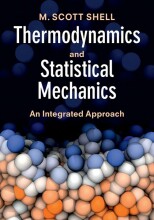Summary: Syllabus Biocatalysis | W M A M van Dongen
- This + 400k other summaries
- A unique study and practice tool
- Never study anything twice again
- Get the grades you hope for
- 100% sure, 100% understanding
Read the summary and the most important questions on Syllabus Biocatalysis | W.M.A.M. van Dongen
-
1 Introduction
-
1.1 What is biocatalysis?
This is a preview. There are 1 more flashcards available for chapter 1.1
Show more cards here -
What is the IUPAC definition of a catalyst?
A catalyst is a compound which enhances the rate of a chemical reaction without being destroyed or incorporated in the product.
-
Why do enzymes need to be extremely efficient catalysts?
Because most reaction are very slow under mild conditions, but are required at a high rate.
-
1.2 Specificity and rate enhancement
This is a preview. There are 1 more flashcards available for chapter 1.2
Show more cards here -
What interaction play a role in specificity?
steric hinder, hydrophilic and hydrophobic interactions, hydrogen bonds and electronic interactions.
-
Why does the formation of a product always need an energy input?
Because in every reaction a high-energetic transition state has to be passed.
-
What are the two possibilities to lower the activation energy?
1. Stabilization of the transition state.
2. Destabilization of the reactants.
-
1.3 Principles of enzyme catalysis
-
Which four different ways of catalyzation by enzymes can be distinguished?
1. Catalysis by complexation
2. Catalysis by temporary formation of covalent intermediates.
3. Catalysis by general acid or base catalysis mechanism
4. Catalysis by distortion of the conformation of the substrate.
-
How does catalysis by complexation work?
The reactants are brought together in optimum orientation, thereby increasing the effective concentration.
-
How does catalysis by temporary formation of covalent intermediates work?
By formation of covalent intermediates between substrate and enzyme the reaction is split up in multiple intermediates, avoiding the formation of high-energy intermediates.
-
How does catalysis by general acid or base catalysis work?
By facilitating selective (de)protonation.
-
How does catalysis by distortion of the conformation of the substrate work?
It destabilizes the ground state.
- Higher grades + faster learning
- Never study anything twice
- 100% sure, 100% understanding
Topics related to Summary: Syllabus Biocatalysis
-
Kinetic data and their interpretation - The stoichiometry of a reaction
-
Kinetic data and their interpretation - Reaction kinetics: the relation between rate and concentration
-
Kinetic data and their interpretation - Interpretation of rate constants
-
Kinetic data and their interpretation - Some examples of the interpretation of activation parameters
-
Kinetic data and their interpretation - Solvation (solvent effect)
-
Kinetic data and their interpretation - Kinetic isotope effect
-
Catalysis by acids, bases and metal ions - The rate of proton transfer
-
Catalysis by acids, bases and metal ions - The influence of pH on the reaction rate































